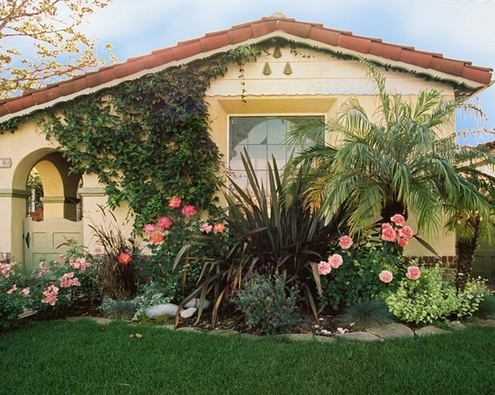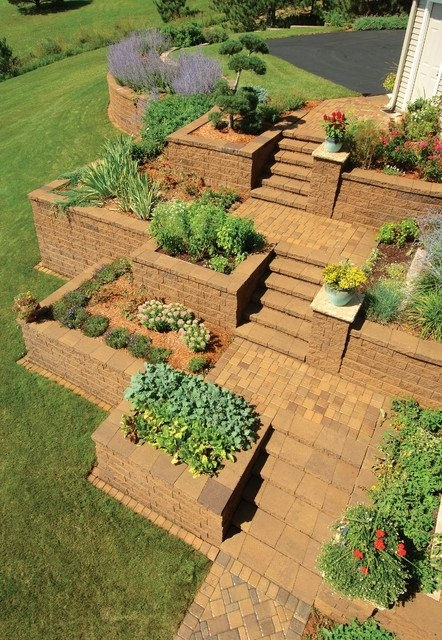Contributed by Bryn Huntpalmer, Modernize.com
 Sure, we’re glad it’s here, but did summer creep up a little too quickly on you? Don’t worry, there’s still time to plant your summer garden and enjoy your harvest of basil, kale, beans, corn, and so much more. Warm temperatures and long sunny days also provide the perfect climate for hearty perennials that will bloom through the Fall. Do your research and give your plants a little extra TLC and your summer garden will be thriving in no time!
Sure, we’re glad it’s here, but did summer creep up a little too quickly on you? Don’t worry, there’s still time to plant your summer garden and enjoy your harvest of basil, kale, beans, corn, and so much more. Warm temperatures and long sunny days also provide the perfect climate for hearty perennials that will bloom through the Fall. Do your research and give your plants a little extra TLC and your summer garden will be thriving in no time!
Prepare and Nurture Your Soil
Many people are skeptical about planting in the summer because the heat of the soil can make it hard for new plants to take root. To ease the transition from container to ground, fill the newly dug hole with water and let it drain before planting. Making sure that the hole and surrounding soil are moist prior to planting will help your plants to be more successful.
Even plants that love warm weather can struggle in areas that face drought and unseasonably warm weather. Protect your plants by applying 2-3 inches of organic mulch such as compost or shredded leaves immediately after planting. This will help preserve soil moisture and prevent invasive weeds that compete for water and nutrients. Check out this great infographic that explains the benefits of mulch in the summer and suggests a variety of different organic matter that you can use in your garden.
 You may also want to consider making a batch of diluted fish emulsion to help your plants quickly settle into their new environment. It may be smelly, but it’s an excellent fertilizer for your plants. To make your own, follow the instructions in this tutorial. In the first few weeks after planting your garden, be sure to check the soil daily to keep it slightly moist.
You may also want to consider making a batch of diluted fish emulsion to help your plants quickly settle into their new environment. It may be smelly, but it’s an excellent fertilizer for your plants. To make your own, follow the instructions in this tutorial. In the first few weeks after planting your garden, be sure to check the soil daily to keep it slightly moist.
Select Your Plants
If you are interested in a vegetable garden, Urban Farmer has a great calendar that offers helpful suggestions for what to plant throughout the summer. Beans, beets, carrots, corn, herbs, melons, and peas all thrive in direct sunlight and warm weather. Just be mindful that beans and peas may produce several times, while carrots are more likely to produce just once. Figure out what your family will really eat (and how often) to plant a garden that will minimize food waste.
Summer is a great time to plant perennials. They are on sale at most nurseries and with a little attention (regularly prune dead leaves and flowers) will bloom well into the fall. Coneflower (pictured) brings a ton of color to your garden while attracting birds and butterflies. Coneflower needs direct sunlight though so if your garden space is a bit on the shady side, consider hostas. They can grow up to four feet tall and will produce colorful flowery wands throughout the summer. If your aim is to keep fresh flowers in your home try blanketflower, coreopsis, salvia, or bee balm (attracts hummingbirds). If your gardening skills are a little more sophisticated, try your hand with lilies (the “stargazer” variety is beautiful in the summer) or Japanese anemone.
It may be a little less fun, but summer is also a great time to work on your lawn. Warm season grass, such as bermuda, bahia, or St. Augustine all need hot weather to thrive. Seeding your lawn over the summer will give grass plenty of time to grow and become established prior to winter.
Enjoy Your Garden - It’s Good for You!
Your garden will vastly improve the appearance of your home while providing you with tasty fresh produce and beautiful flowers. Did you know that the act of gardening is actually good for you, too? According to Eartheasy, gardeners have measurably lower cortisol levels (the stress hormone) resulting in an improved immune system and healthier heart. With all of these benefits, what are you waiting for? Grab your sunscreen and gloves and get gardening!







